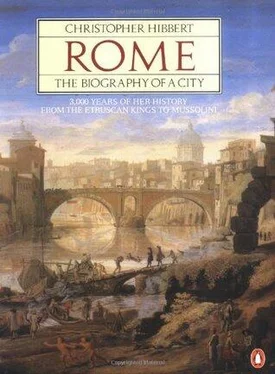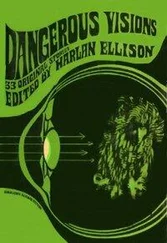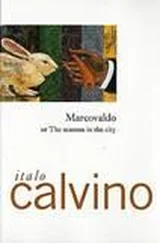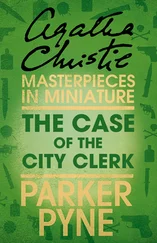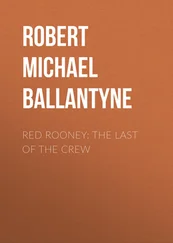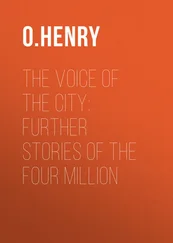Christopher Hibbert - Rome. The Biography of the City
Здесь есть возможность читать онлайн «Christopher Hibbert - Rome. The Biography of the City» весь текст электронной книги совершенно бесплатно (целиком полную версию без сокращений). В некоторых случаях можно слушать аудио, скачать через торрент в формате fb2 и присутствует краткое содержание. Жанр: Культурология, Искусство и Дизайн, на английском языке. Описание произведения, (предисловие) а так же отзывы посетителей доступны на портале библиотеки ЛибКат.
- Название:Rome. The Biography of the City
- Автор:
- Жанр:
- Год:неизвестен
- ISBN:нет данных
- Рейтинг книги:3 / 5. Голосов: 1
-
Избранное:Добавить в избранное
- Отзывы:
-
Ваша оценка:
- 60
- 1
- 2
- 3
- 4
- 5
Rome. The Biography of the City: краткое содержание, описание и аннотация
Предлагаем к чтению аннотацию, описание, краткое содержание или предисловие (зависит от того, что написал сам автор книги «Rome. The Biography of the City»). Если вы не нашли необходимую информацию о книге — напишите в комментариях, мы постараемся отыскать её.
Rome. The Biography of the City — читать онлайн бесплатно полную книгу (весь текст) целиком
Ниже представлен текст книги, разбитый по страницам. Система сохранения места последней прочитанной страницы, позволяет с удобством читать онлайн бесплатно книгу «Rome. The Biography of the City», без необходимости каждый раз заново искать на чём Вы остановились. Поставьте закладку, и сможете в любой момент перейти на страницу, на которой закончили чтение.
Интервал:
Закладка:
4. Built in the fourth century, SS. QUATTRO CORONATI was enlarged by Pope Honorius I (625–38) and had its roof repaired under Pope Hadrian I (772–95). Pope Leo IV (847–55) restored the entire building and brought to it the four bodies of the martyrs to whom the church was dedicated. These martyrs were listed in the early Jeromian Martyrology as Saints Severus, Severianus, Carpoforus and Vittorinus and were venerated in Rome on 8 November on the Caelian hill. They were Roman soldiers executed for refusing to sacrifice to a statue of Aesculapius, but in the course of time they were confused with sculptors who were martyred under Diocletian for declining to make a statue of the pagan deity. The church was burned down in 1084 by the Normans under Robert Guiscard and rebuilt by Pope Paschal II between 1111 and 1116. Pius IV (1559–65) redecorated the basilica and gave the adjoining newly rebuilt convent into the keeping of Augustinian nuns. The cloister of this convent is one of the earliest in Rome.
5. S. MARTINO AI MONTI, on the Monte Oppio close to the site of TRAJAN'S BATHS, is one of the oldest foundations in Rome. Originally a titular church ascribed to one Equitius, it was converted into a basilica by Pope Symmachus (498–514) who dedicated it to St Martin of Tours, the great missionary of the Church in Gaul. After restoration by Pope Hadrian I in 772, the church was entirely rebuilt by Pope Sergius 11 (844–7). It was modernized to designs by Pietro da Cortona from 1635 to 1664 under the Barberini Pope, Urban VIII, and his successors. The façade belongs to this period. And it was at this time that the ancient titulus Equitii was discovered among the foundations of Trajan's Baths, and immediately restored to its former use as a chapel. The gilded ceiling was donated by S. Carlo Borromeo. The walls were frescoed by Poussin's brother-in-law, Dughet, between 1645 and 1650.
6. Situated in the FORUM next to the BASILICA OF MAXENTIUS AND CONSTANTINE, the church of S. MARIA NOVA was built in the second half of the tenth century to replace the fifth-century S. MARIA ANTIQUA after its destruction by an earthquake in 896. The old church had occupied a site across the Forum on the slope of the Palatine hill. S. Maria Nova incorporated a chapel to SS. PETER AND PAUL which Pope Paul I (757–67) had built over a portico of the TEMPLE OF VENUS AND ROME. When S. Francesca Romana established her community of Oblates Regular of St Benedict (apparently the first foundation of a religious community by a Roman since the time of St Gregory the Great), the church was renamed after her. It was given its Baroque appearance in 1600–1615. The façade is by Carlo Lombardi (1615). There is a fifth-century encaustic picture of the Madonna and Child in the crypt, a remarkable example of early Christian art. The beautiful campanile dates from about 1160.
7. The church of S. MARIA IN DOMNICA derives from the first diaconia established in Rome. In early Christian times dominicum signified a church. It was rebuilt by Pope Paschal I (817–24) and renovated in about 1512 by Cardinal Giovanni de' Medici, later Pope Leo X, who probably employed Andrea Sansovino as architect for the splendid porch which has also been attributed to both Peruzzi and Raphael. The church was restored in 1820. The fine mosaics in the apse are from the time of Paschal I. In Piazza della Navicella is a charming fountain in the shape of a small boat ( navicella ). This was copied, at the desire of Leo X, from a classical model. The church is also called La Navicella.
8. The original church of S. CECILIA IN TRASTEVERE seems to have been built by a Roman woman of rank who was named after the martyred saint. At the end of the sixth century St Gregory the Great reconstructed it as a basilica which was rebuilt by Paschal I (817–24) who attached a convent. The portico and campanile were added in the twelfth century. The interior of the church has been transformed by successive restoration in 1725, 1823 and 1955. But in the gallery above the entrance enough remains of Cavallini's ‘Last Judgement’, painted in 1293, to identify it as one of the greatest masterpieces of medieval art in Rome. The statue of the saint is by Stefano Maderno who saw her sarcophagus opened in 1599 and made a sketch of her as she was found and as he afterwards sculpted her, lying on her side in a golden robe with the wounds showing on her neck. The tabernacle over the high altar is by Arnolfo di Cambio. In the apse behind it is a superb ninth-century mosaic made for Paschal I who is shown being introduced by St Cecilia to Christ in heaven. The monumental gateway to the entrance courtyard (1725) is by Ferdinando Fuga who also built the façade of the church. Between S. Cecilia in Trastevere and the Lungotevere Ripa is the delightful small Romanesque church of S. MARIA IN CAPPELLA. Founded at the end of the eleventh century, this has one of the oldest campaniles in Rome. The garden beside it was made by Donna Olimpia Pamphilj, sister-in-law of Innocent X, whose descendants built the surrounding hospice for the aged poor in the nineteenth century. Opposite the west end of S. Cecilia is S. GIOVANNI DEI GENOVESI. The church of the Genoese community in Rome, it was built during the pontificate of Sixtus IV (1471–84), himself a native of Savona near Genoa. It was completely restored in 1864. To the left of the church is the Ospizio dei Genovesi, whose lovely fifteenth-century cloister is attributed to Baccio Pontelli.
9. In the days of the Roman Republic there were four city wards or regiones . By 7 B.C. the number had been increased to fourteen; and under Alexander Severus (222–35) fourteen consular curatores were instituted under a Praefectus Urbis . These, with their approximate locations were:
Porta Capena Round the Park of Porta Capena Caelimontium Caelian hill Isis et Serapis Quirinal hill Templum Pacis The Subura, Via Cavour, the Viminal Esquiliae The Esquiline Alta Semita The Gardens of Sallust Via Lata The Corso Forum Romanum The Forum Circus Flaminius Campus Martius Palatium The Palatine Circus Maximus The area around the Circus Piscina Publica The Baths of Caracalla Aventina The Aventine Trans Tiberum Trastevere
The rioni of the Middle Ages gradually evolved out of these regiones , though they varied from time to time in number and size as a result of fusions and divisions. In the fifteenth century there were thirteen rioni to which, in 1586, a fourteenth was added by the inclusion of the Leonine City or Borgo. These were:
Monti The high ground on the east side of the city Trevi Includes most of the Quirinal hill Colonna North from Via del Tritone between the Corso and Via Sistina Campo Marzo The most northerly rione near PIAZZA DEL POPOLO Ponte The area inside the first big river bend Parione Around PIAZZA NAVONA Regola Along the river from Ponte V. Emanuele on both sides of the Via Giulia S. Eustachio Around the church of that name west of the PANTHEON Pigna Includes the PANTHEON and borders on the Corso Umberto and the Corso V. Emanuele Campitelli Includes the Capitol, FORUM and Palatine S. Angelo The area around S. Angelo in Pescheria near the Tiber Island Ripa Includes the Tiber Island and the Aventine Trastevere The whole urban area on the right bank of the river excluding the Borgo Borgo ST PETER'S, the VATICAN
A further eight rioni were brought into being by a decision of the Roman Municipal Council on 9 December 1921. These are:
Esquilino From Quattro Fontane to the LATERAN Ludovisi The area south of Porta Pinciana and Porta Salaria Sallustiano South-west from Porta Salaria to Porta Pia Castro Pretorio Porta Pia to Porta S. Lorenzo Celio Porta Metronia to Porta S. Sebastiano S. Saba Porta S. Sebastiano to Porta S. Paolo Testaccio Porta S. Paolo to the Tiber Prati North of CASTEL SANT' ANGELO and the Borgo
Читать дальшеИнтервал:
Закладка:
Похожие книги на «Rome. The Biography of the City»
Представляем Вашему вниманию похожие книги на «Rome. The Biography of the City» списком для выбора. Мы отобрали схожую по названию и смыслу литературу в надежде предоставить читателям больше вариантов отыскать новые, интересные, ещё непрочитанные произведения.
Обсуждение, отзывы о книге «Rome. The Biography of the City» и просто собственные мнения читателей. Оставьте ваши комментарии, напишите, что Вы думаете о произведении, его смысле или главных героях. Укажите что конкретно понравилось, а что нет, и почему Вы так считаете.
